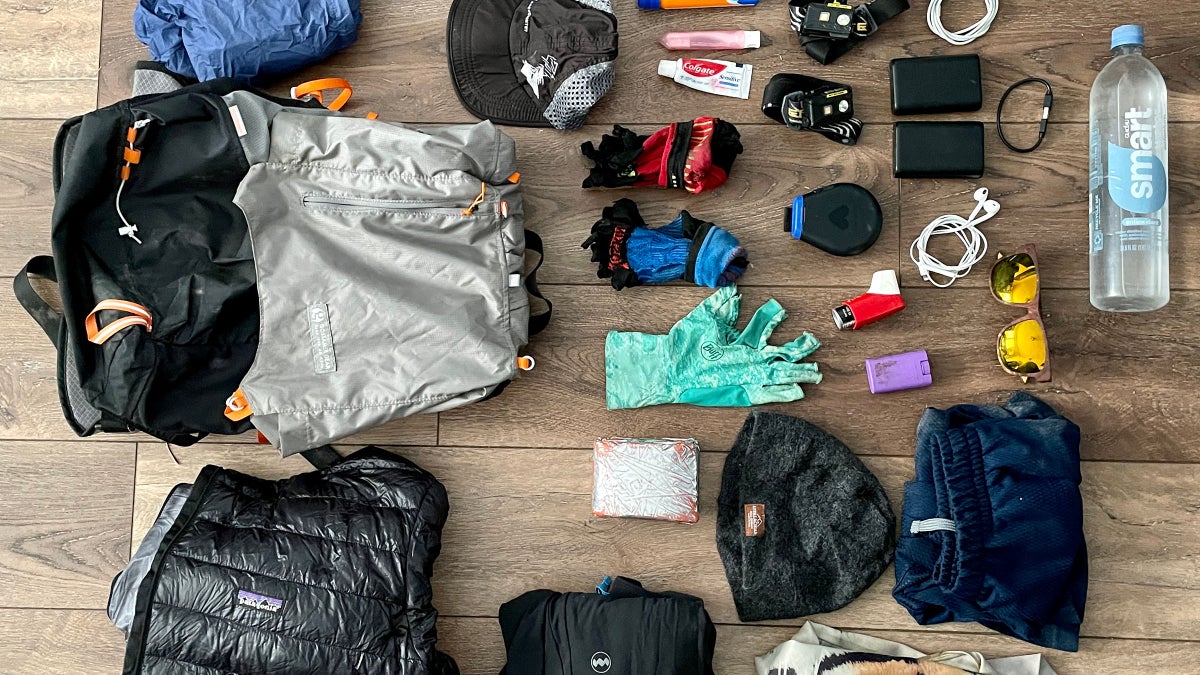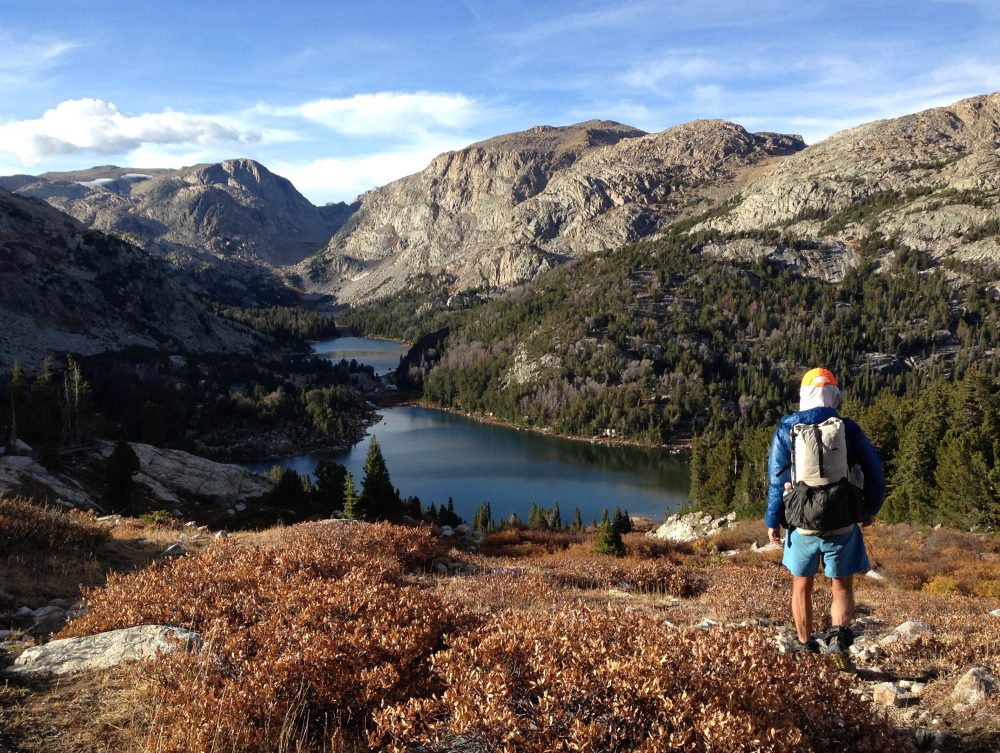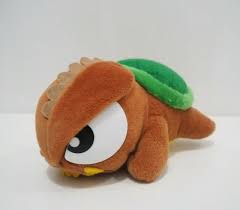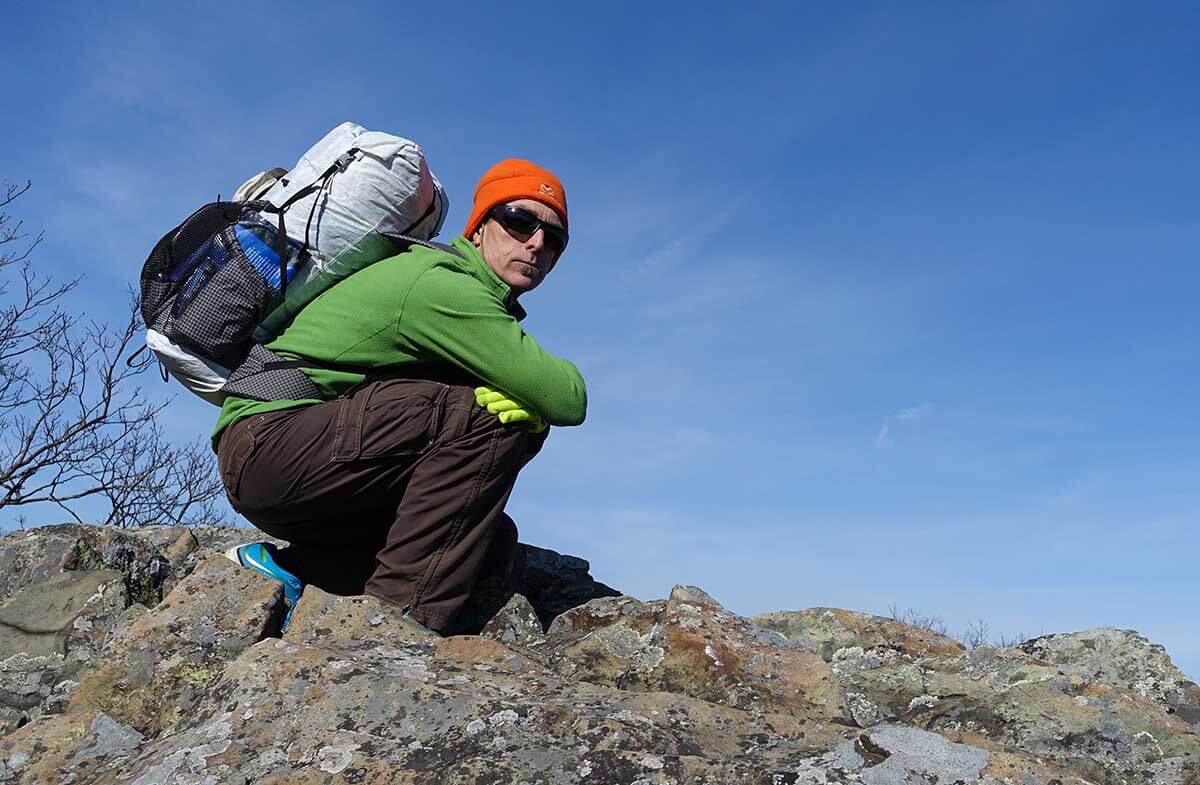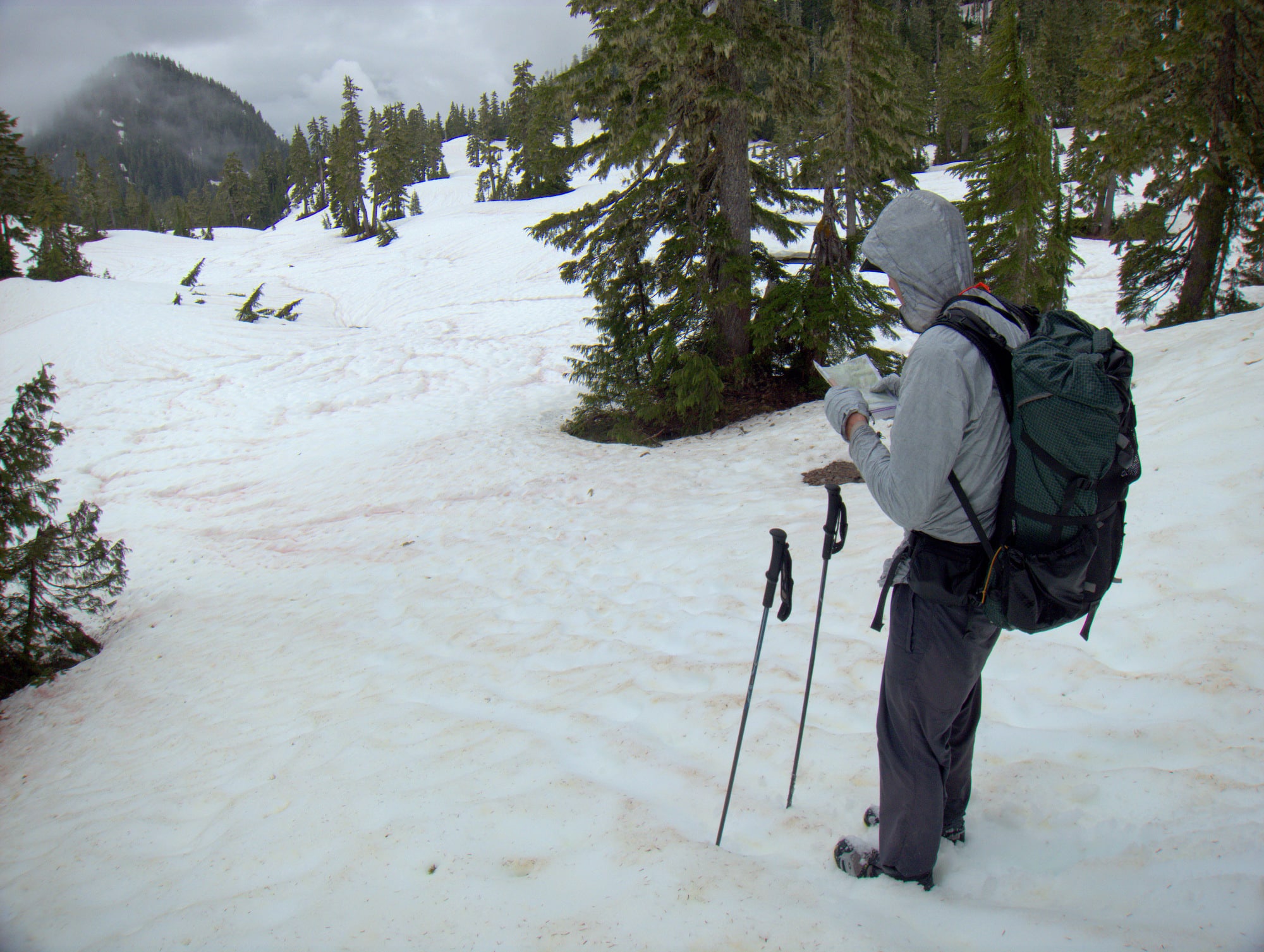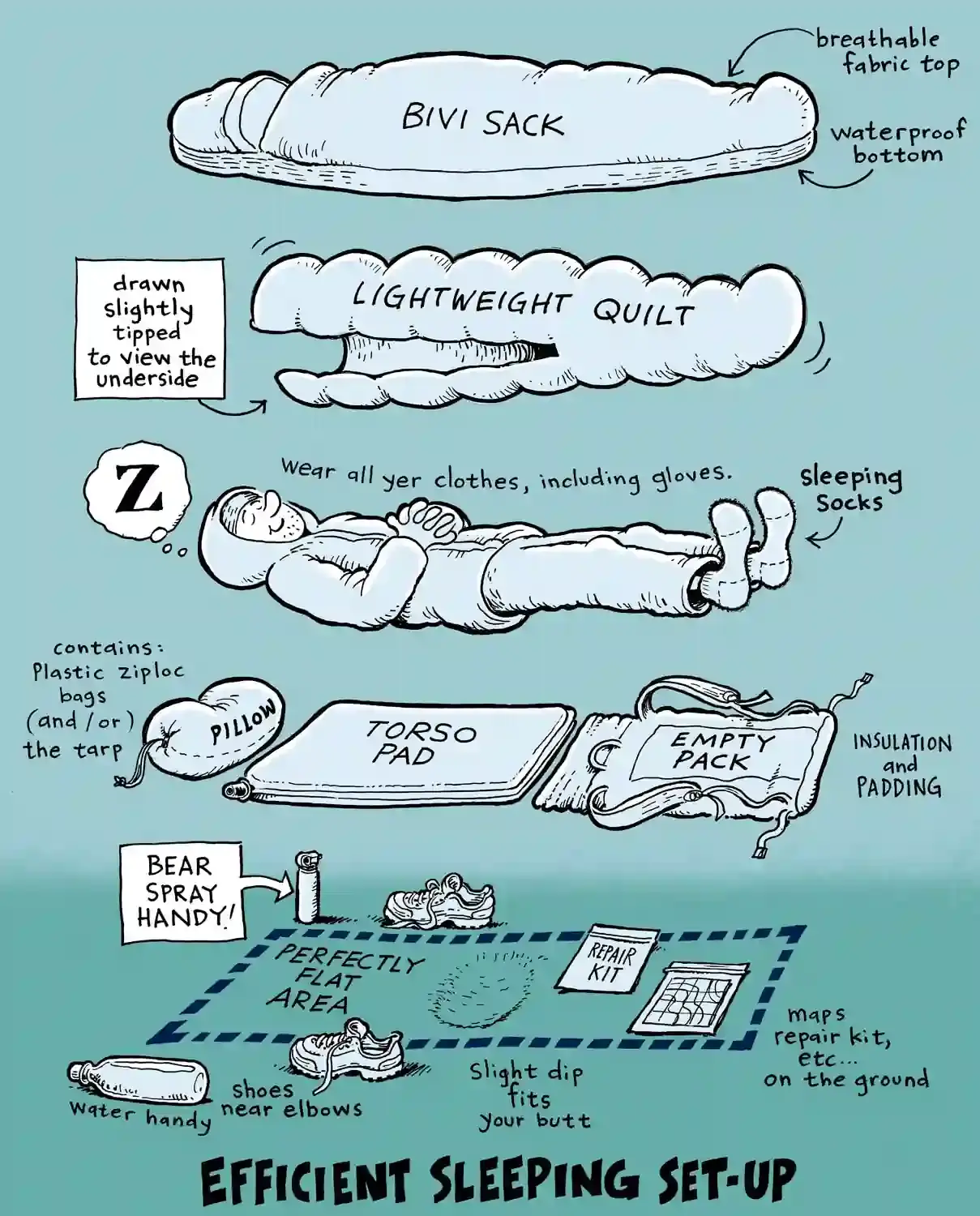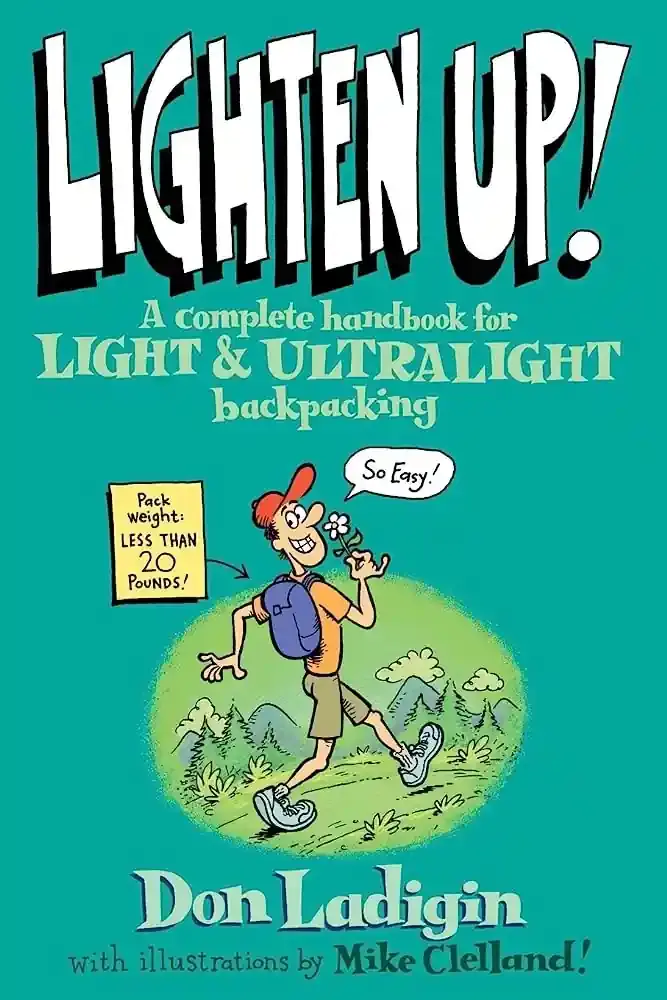- @miles@lemmy.world
- •
- 10M
- •
[original post](https://old.reddit.com/r/Ultralight/comments/cgu2re/before_and_after_traditional_backpacker_goes/) by [happypolychaetes](https://old.reddit.com/user/happypolychaetes)
# Before and After: Traditional backpacker goes lightweight
Last year, there was a [great post](https://www.reddit.com/r/Ultralight/comments/951izx/i_converted_from_traditional_to_lightweight_for/) by [/u/Potatopants888](https://old.reddit.com/u/Potatopants888) that I found super informative. Well now I have my own report; if you’re a seasoned UL’er you won’t find anything groundbreaking in here, but for anyone else, I hope you’ll find something useful. For context, my trips are mostly 3-season in the PNW, and all are with my spouse so some weights listed here are for shared gear (e.g. tent).
So I was your classic Backpacker Magazine^TM^ backpacker. I’d heard of “ultralighting,” but it was a fringe thing for weirdos. There was no way to get that light, so it didn’t matter if I bought a bunch of absurdly expensive new gear. Right? I never paid any more attention to it until I began seeing various cottage brands popping up and figured I’d at least look into the concept. Finally I had an epiphany during what should have been an easy weekend trip last summer. My pack weighed 31+ lbs and I thought, this is ridiculous. *There has to be a way to make this easier*. I got home and weighed everything.
## Step 1: Downsized and ditched
Sitting on the floor surrounded by gear, I realized I’d just brought so much unnecessary shit. It was embarrassing. I had never bothered to repackage things because “oh it’s only a few ounces, who cares,” neglecting to realize that it VERY MUCH added up. This is where my mentality began to shift. Sure, maybe this weight savings was only 2 oz, but that one was 8 oz, and that one was 3 oz, and, well…a ruthless culling ensued, and the pounds began to drop.
Ditched: Extra “survival kit” (5.3 oz), Kindle case (5.1 oz), stuff sacks (6.7 oz), camp shoes (~10 oz), rain pants (10.8 oz), stove case/starter (1.6 oz), extra kitchen stuff (2 oz), toothbrush holder (1.1 oz), extra clothing (~16 oz)
Downsized/repackaged: First aid kit (12.6 oz to ~3 oz), bug spray/sunscreen/toiletries (22.6 oz to 10.7 oz), toilet paper (8 oz to 2-4 oz), food (unknown, but probably saved 5+ oz in excess packaging). I also dialed in our actual food a lot. I’d always thrown stuff together with a vague meal plan, but I didn’t bother weighing it, measuring out portions, or choosing high calorie/oz foods. At the end of a trip we’d often have 2 lbs+ of leftover food. Turns out a little planning goes a long way. Not only did we carry less weight, we had better meals and stayed energized longer.
## Step 2: Small upgrades
Before: GSI Backpacker Bugaboo (29.7 oz)
After: Snow Peak Trek 1.4L pot/pan (7 oz) + GSI Bugaboo cups/bowl (6 oz)
I’d like to publicly shame whoever labeled the Bugaboo as a two person backpacking cookset. It’s such overkill. We got a 1.4L pot which is still totally overkill, but it’s big enough to boil enough water for two beverages and a meal, or to cook for three people if needed (happens fairly often with our friend group). We carry separate cups and one bowl; the second person eats out of the pot.
Before: MSR Mini Works (16 oz)
After: Sawyer Squeeze + DIY gravity feed setup (6 oz)
My husband rigged up a gravity feed system with the Sawyer tubing and a chopped-up Smartwater bottle. It’s lighter and way easier to use. We’ve used it to easily filter water for three people, a task which would have formerly led to very sore arms.
Before: Contigo water bottle (~10 oz) + Osprey hydration bladder (~9 oz)
After: Smartwater bottles (2.6 oz for two)
Not much to say here. Easiest “upgrade” I made.
## Step 3: Colorado field test
Rocky Mountain High! Despite carrying 5 days’ worth of food, and adding an Ursack bear bag, my total pack weight dropped from 31 lbs to 28 lbs (baseweight from ~23 to 17 lbs). And I could tell. Although this trip was objectively harder—lots of up and down and almost all above 10,000’ elevation—it still felt easier. My one regret was ditching the rain pants. It poured rain the last day of the trip, complete with hail and gusty winds atop a 12,800’ pass. My legs were soaked and although my top half was fine it didn’t take long for my body heat to leech out. Hello, early stage hypothermia. #stupidlight, lesson learned.
## Step 4: Upgrade-apalooza
Before: REI Half Dome 2+ (90 oz)
After: Big Agnes Tiger Wall UL3 (47 oz) + polycryo (2 oz)
Our first major upgrade for this season! We weren’t ready to pay DCF prices but did want a double-wall shelter. We are both tall (6’1’’, 5’10’’) and very active sleepers, so we went with the 3-person version. Honestly I have no idea how you’d fit three people inside, but it’s palatial for two. It is delicate fabric, especially the floor (15D, eek), and I’m worried about ripping it. We’ve added a polycryo footprint and are very careful about site selection. We’ve hit almost every weather condition (except snow) and it’s performed admirably although I think one pole might have gotten slightly bent from 40 mph wind...
I have two chief complaints. One: vestibule zippers. There’s a fabric flap over the zipper on the outside, and when you’re trying to unzip it from inside the zipper constantly gets stuck in the flap. This is especially annoying if it’s raining. We’ve gotten better at dealing with this, but it is still a source of frustration. Two: dirt blows in really easily, due to the low-ish bathtub edge. After that windy night I mentioned earlier, we woke up with a fine layer of dirt coating everything inside.
Overall, we are happy with this tent. I’m not sure it’s worth paying full price ($450) though; wait for a sale.
Before: Gregory Deva 60L (89 oz)
After: Granite Gear Crown2 38L (33.6 oz w/o brain)
Oh, Deva, how I loved you. I bought it in 2008 after it got picked as the Backpacker Editor’s Choice; it was a big upgrade from borrowing my mom’s 1960s external frame monstrosity. It was a comfy, durable pack, but it’s just so heavy. Countless hours and one very detailed comparison spreadsheet later, I decided on the Crown2 38.
This being my first non-traditional pack, I was pretty nervous about comfort, but those fears were unfounded. Shockingly, a lighter pack is just fine when your load shrinks. Whodathunk? It’s also very versatile (removable hip belt + frame sheet) if I want to go lighter in the future. Despite its smaller volume it doesn’t feel much smaller, mainly because the Deva has so many little pockets dividing the interior space. It felt like it was more part of my body than the Deva, whose suspension was designed to kind of…float off your back (for lack of a better term). I felt more balanced with the Crown2, which was good because its maiden voyage involved descending a climber’s trail on the back side of a pass, which was pretty much just straight down a scree/talus slope, as well as boulder hopping along a very steep slope above a freezing lake.
Note: I’m a tall woman with a long torso (19’’) and a smallish bust. Shorter and/or bustier women may want to look elsewhere; the 38L currently comes in only one size, with potentially boob-crushing J-straps. The 60L does come in a women’s version.
Before: Golite Adrenaline 20 (32 oz)
After: REI Magma 30 (19 oz)
The Adrenaline was a pretty cutting-edge lightweight bag when I bought it (another 2008 Backpacker Editor’s Choice). But it’s consistently too warm for 95% of my trips. I won’t lie, even after lurking in the UL community for a year, I was skeptical about quilts. When REI came out with this quilt I decided to take the plunge because I knew I could easily return it.
It involved a little setup, but I had no real complaints. I’m an active sleeper and was very happy with how warm I stayed. I only wore thin long underwear and a hat. The second night it got below 40F and I still didn’t cinch the neck up. This is definitely a winner and I foresee it being my go-to 3-season bag for most PNW conditions.
Before: REI Stratus (21.5 oz)
After: Nemo Tensor Insulated (14.8 oz)
I tried the UL poster child NeoAir Xlite but it was super uncomfortable and I hated the crinkling. My husband loved his Tensor, so when I found one at an REI garage sale for $13 it was a no brainer. The square-ish baffles seem to work better for my hips than any other pad. Definitely a quality of life upgrade.
Before: Keen boots (30 oz)
After: Salomon Speedcross 4s (20 oz)
The Salomons are more breathable so my feet stay cool, they dry quickly if they get wet, and I get a better sense of the trail without a giant clunky boot in the way. The only downside is the bottoms of my feet seemed to get a little sorer, probably because there was less padding between me and the ground. I think I’m sold on trail runners.
Before: Cocoon pillow (3.5 oz)
After: Nemo Fillow (9 oz)
Wait, this isn’t lighter! Heresy! Well, one of the great things about going lighter is having the freedom to add “luxury” weight in places that matter to me. My old pillow was small, awkwardly shaped, and felt like sleeping on a beach ball. I tried a few potential upgrades but the Fillow is hands down the most comfortable. A good night’s sleep is worth those 6 oz.
I’ve seen people express trepidation about buying gear from cottage companies. I’m absolutely not trying to tell you to avoid cottage companies, but you also don’t have to buy everything from them to be “truly UL.” Mainstream retailers like REI are offering more and more lightweight/UL options, and if you’re trying to ease into going lighter and/or just want the peace of mind of a 1-year return policy, that is a perfectly legitimate route to take. All of my big purchases were on sale, too.
Here is my current core weekend trip [lighterpack](https://lighterpack.com/r/7k97z6).
So, there you have it. I know it was a wall of text but I really hope this helps someone who is overwhelmed about where to start, or on the fence about how much difference it even makes. Going lighter made backpacking more fun. It really does work. There are plenty of challenges in nature without creating another one on your back.
Now go take a hike.
Hi all! Looking for anyone with experience hiking in Patagonia in late shoulder season. I will be headed down at the start of November and plan to do the Huemul Circuit as well as a few other overnights.
I am not overly concerned about my big 3 as I have a solid 20 degree sleep system and a Tarptent Stratopsire 2 that _should_ hold up to the wind, but I AM seeking advice on clothing and footwear! This definitely seems like the trickiest call with the possibility of sustained extreme winds, rain, and cool temps.
I was thinking of the following:
* 3 pairs darn tough wool socks
* 2/3 pairs underwear
* 1 long sleeve sun hoody - open to suggestions, maybe a midweight capilene instead?
* 1 t shirt
* Capilene long underwear
* Pants of some kind? Open to suggestions.
* 1 pair running shorts
* Down jacket
* Rain jacket
* Rain pants
* Lighter weight fleece of some kind
* Buff or fleece Skida hat
* Cheap fleece gloves
* Sunglasses
Anything that you would recommend adding/removing? I am wondering if some form of rain mitts could be prudent. This is a lot of clothing already, so I am wondering if certain things are really necessary, such as both a short-sleeve shirt and a sun hoody.
Edit: Adding formal shakedown info.
**Where are you going and when:** Patagonia, Argentina, Huemul Circuit and other day hikes. November 2023.
**What temp range and weather do you expect:** 35-65 Fahrenheit/0C-18C. Very high winds, significant rain.
**Goal Baseweight (BPW):** Ideally 14LBS. Going to be carrying 4 days of food max.
**Budget:** $400
**Non-negotiable Items:** Thermarest Neoair X-Lite, Tarptent Stratopsire 2, Enlightened Equipment Revelation 20F with 850fp down
**Solo or with another person?:** With one other person
**Additional Information:** None
**Lighterpack Link:** Traveling right now, so no way to weigh my gear. Will edit later.
I have an InReach Mini 2 but am thinking about picking up a Motorola Defy to try as an alternative.
I'm mostly out day-hiking, but usually in remote areas which are sparsely-populated where cell signal is inconsistent. Only a few times a year am I lucky enough to find time for multiple-day hikes.
Garmin is reliable, and I'm in their ecosystem with my watch, too.
But I'm a sucker for new tech, and the Defy looks interesting.
Anyone have any thoughts either way?
As of this writing [much of Canada and the eastern USA is under moderate-to-unhealthy air quality](https://apnews.com/article/wildfires-canada-quebec-air-quality-f145b883ac478262464508348762b5f7)
Short, to the point, and humorously illustrated by famed outdoor illustrator Mike Clelland, this book presents everything hikers and backpackers need to be safe, comfortable, and well-fed while carrying a very small and lightweight pack.
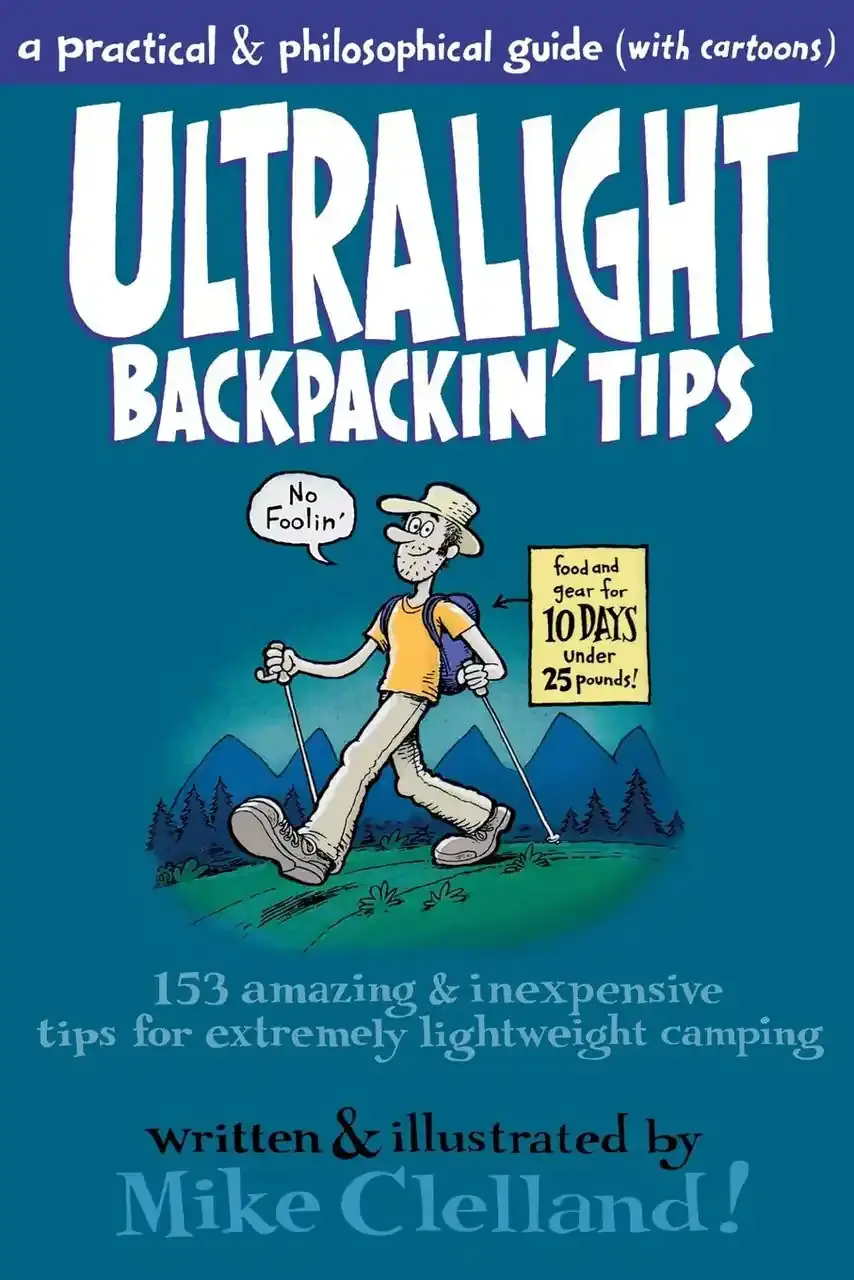
10lbs refers to Alan's total pack weight (TPW), which is base weight + consumables -- gear, food, water, and stove fuel.
- miles
- •
- andrewskurka.com
- •
- 10M
- •
With just 13 items, go anywhere in 3-season conditions.
- miles
- •
- lighterpack.com
- •
- 10M
- •
DeputySean's gear guide is practical, up-to-date and shamelessly cheap.
- miles
- •
- 10M
- •
```
Pack Size Advice Copypasta
What size pack should I get?
Will pack X work for me?
Can I fit my current gear into X liters?
Do the following:
1. Assemble all the gear and food you plan to carry.
2. Put it in a cardboard box.
3. Measure Width, Length and Height of the stuff in the box.
4. Multiply Width x Length x Height to get Volume.
5. Convert Volume to liters. If you measured in inches, divide by 61.
6. Weigh what you’re carrying.
7. Over 20 lbs you probably want a framed pack + hip belt. Over 25 lbs you definitely do.
8. If possible try on weighted packs, exact fit and comfort limits vary per person.
9. Make your decision.
```
- miles
- •
- www.youtube.com
- •
- 10M
- •
In Nov 2022 Abby and Cordis attempt to complete the grueling ~130 mile L2H in under 53 hours.
- miles
- •
- 10M
- •
[original post](https://old.reddit.com/r/Ultralight/comments/9i268m/how_to_sleep_warm/) by [deleted]
I see a lot of people complaining about being cold at night. I also meet a lot of people on trail who say they are carrying 0º or 10º bags/quilts who are still complaining about being cold. I used to think I was a cold sleeper, but now I sleep warm and cozy every night. I'm going share a few tips that work really well for me, your mileage may vary.
Gear
I've taken this setup well into the 20ºs and been very comfortable.
* Katabatic Palisade 30º, 6'0" normal width (I'm 5'10" and 145lbs.)
* Thermarest NeoAir X-lite Women's
* (Sometimes) Katabatic Bristlecone Bivy
* Tarp
* (On AZT w/ girlfriend) Nemo Hornet 2p
If you are going to spend money on anything, spend it on a good quilt. My only experience is with a 20º EE Revelation and my beloved 30º Katabatic Palisade. I find the Katabatic to be vastly superior to many ways to the EE, not just in build quality but in the design choices made. Here's why:
* Differential cut makes the quilt wrap around you naturally
* Elastic hem around the opening also helps the quilt wrap around your body
* Superior pad attachment system
* Draft collar
* Overstuffed footbox and draft collar
Nunatak also has many of these features, but I have never slept in one of their quilts. I am hoping to test some of their products soon and will report back.
The bivy is a new addition for me, and I love it. I bought the Katabatic because of the integration with their pad attachment system and I believe in their build quality. There are several other high quality bivys including Borah and MLD. I find the bivy to be amazing for cowboy camping. It completely eliminates drafts and adds about 5-10ºs (estimate) of warmth. I'm not a scientist, but it seems like windy nights can pull warmth away from your quilt, especially when cowboy camping, because quilts tend to use highly breathable fabric. I've noticed on windy nights in the bivy this isn't an issue.
I believe I could be just as warm on a foam pad, the NeoAir is a comfort thing for me.
I almost always cowboy camp unless it's raining or I have a non-ideal camp site. More on campsites later.
Clothing
Moisture is your enemy. If you are wearing anything that is wet or sweaty, take it off. Absolutely do not sleep in your hiking socks, they are damp even if it doesn't seem like it. My only exception to this is I will occasionally sleep in my hiking shorts because they dry so fast.
The only layer I wear on my top half is my Melanzana hoodie because it breathes extremely well. Don't have a cow, any fleece would be fine. I carry a Montbell Tachyon wind jacket and a Frogg Toggs rain jacket and I absolutely NEVER sleep in them, no matter how cold it gets. The few times that I have tried, I got clammy and extremely cold. This is one of the reasons I don't like puffies for sleeping, the shells are nylon and that makes me clammy.
On my bottom half I almost always sleep in my shorts. If it seems like it will get very cold, or I have a non-ideal campsite, I wear leggings. My leggings are some kind of generic polyester sport things I got at a thrift store. I don't believe base layers need to be fancy, save that money for your quilt.
I never wear socks to sleep. I used to and my feet were always cold. I think this has something to do with compression and blood flow. I've heard people have better luck with loose fitting socks. Low 20ºs in a 30º quilt with no socks and my feet hang over the edge of my pad, warm feet.
Campsites
Read [Andrew Skurka's articles on 5-star Campsites](https://andrewskurka.com/five-star-campsites-part-1-introduction/), I will go over the basics. In my experience it is somewhat rare to find a campsite that checks all of these boxes, but do your best. Prioritize all of these things over aesthetically beautiful campsites if you want to be warm.
Don't camp in a low spot. Cold air settles here and it will be significantly colder than a spot that is even just a few feet higher.
Find something that blocks the wind. Camp snug right up against a tree or big rock.
Pitch your tarp with the broad side to the wind. Don't make a wind tunnel.
Make sure there is something overhead. You need thermal cover or space will suck the heat away from you. If I'm forced to camp somewhere exposed, this is one of the rare instances where I will pitch my tarp even when it's dry. Check for widow maker branches and dead trees.
Don't camp on exposed rock or hard packed dirt. You want some insulation underneath. People who clear their campsites of pine duff are ding dongs, and I see this a lot. Be aware of non-durable surfaces and sensitive environments like meadows.
Don't camp close to water. You shouldn't be doing this anyway because LNT. Water tends to be in low spots, and if you are too close you are more likely to have condensation issues.
Food
Eat a shit ton of food before bed. Your body burns calories, and that keeps you warm. If you are generally cold all over, not just in drafty spots or your feet, you can likely solve this with food. Before bed, I eat:
* Dinner, usually Fritos and chili
* A handful of nuts
* A bar of some sort
* 3 or 4 Twizzlers
TL;DR
* Buy a good quilt (Katabatic or Nunatak, there are probably others too)
* Wear dry breathable clothing
* Read [Skurka's campsite blogs](https://andrewskurka.com/five-star-campsites-part-1-introduction/)
* Eat lots and lots of food before bed
- miles
- •
- 10M
- •
If you’ve stumbled across this and are curious what this is all about, come in and say hi!
- miles
- •
- lemmy.world
- •
- 10M
- •
https://ultralightbackpackintips.blogspot.com/2012/04/
Mike Clelland discusses site selection and an ultralight sleep system.
- miles
- •
- old.reddit.com
- •
- 10M
- •
r/ultralight was a relatively niche community until it [hit an inflection point in summer 2020](https://subredditstats.com/r/ultralight) when COVID caused a deluge of new subscribers who subsequently [complained about over moderation](https://old.reddit.com/r/Ultralight/comments/tll5cd/this_sub_is_over_moderated/). The mods backed down and the sub became less focused and more generalized. In June 2023 the mods shut the sub down as part of wider protests over Reddit [enshittification](https://en.wikipedia.org/wiki/Cory_Doctorow#Enshittification) related to an IPO.
Hoping [!ultralight](https://lemmy.world/c/ultralight) can recapture that early community spirit.
- miles
- •
- lemmy.world
- •
- 10M
- •
When you create a post asking the community how you can lighten your pack please include the following information to help responders understand your trip -- you will receive more useful responses!
1: Get a [kitchen or postal scale](https://www.amazon.com/dp/B01DGEWHN4/). **Yes, you need to do this**.
2: Weigh your gear and put it into [Lighterpack](https://www.lighterpack.com/). Do **NOT** use manufacturer advertised weights, they're almost always wrong. If you do this go back to step 1!
3: Copy/paste/fill out the following template:
**Where are you going and when**: (Insert response here)
**What temp range and weather do you expect**: (Insert response here)
**Goal Baseweight (BPW)**: (Insert response here)
**Budget**: (Insert response here)
**Non-negotiable Items**: (Insert response here)
**Solo or with another person?**: (Insert response here)
**Additional Information**: (Insert response here)
**Lighterpack Link**: (Insert link here)
- miles
- •
- lemmy.world
- •
- 10M
- •
https://www.litesmith.com/lighten-up/
Best introduction to lightweight backpack we've found. Rather than talk about specific pieces of gear, it describes the change in mindset needed for ultralight backpacking. It doesn't tell you what to buy but guides you on how to decide what to buy. It's perfect for newbies or traditional backpackers who want to learn how to make the transition to a lighter, more streamlined approach.
Overnight backcountry hiking in the spirit of taking less and doing more. Ask yourself: do I really need that?
Rules:
- Be decent.
- Stay on topic.
- 0 users online
- 2 users / day
- 4 users / week
- 2 users / month
- 2 users / 6 months
- 0 subscribers
- 19 Posts
- 0 Comments
- Modlog
- mods:
Lemmy.world

The World's Internet Frontpage
Lemmy.world is a general-purpose Lemmy instance of various topics, for the entire world to use.
Be polite and follow the rules (https://mastodon.world/about).
Get started
See the Getting Started Guide
Donations
If you would like to make a donation to support the cost of running this platform, please do so at the mastodon. world donation URLs:
Questions / Issues
Questions/issues can be posted here or emailed to info@lemmy.world. Reporting is to be done via the reporting button under a post/comment.


